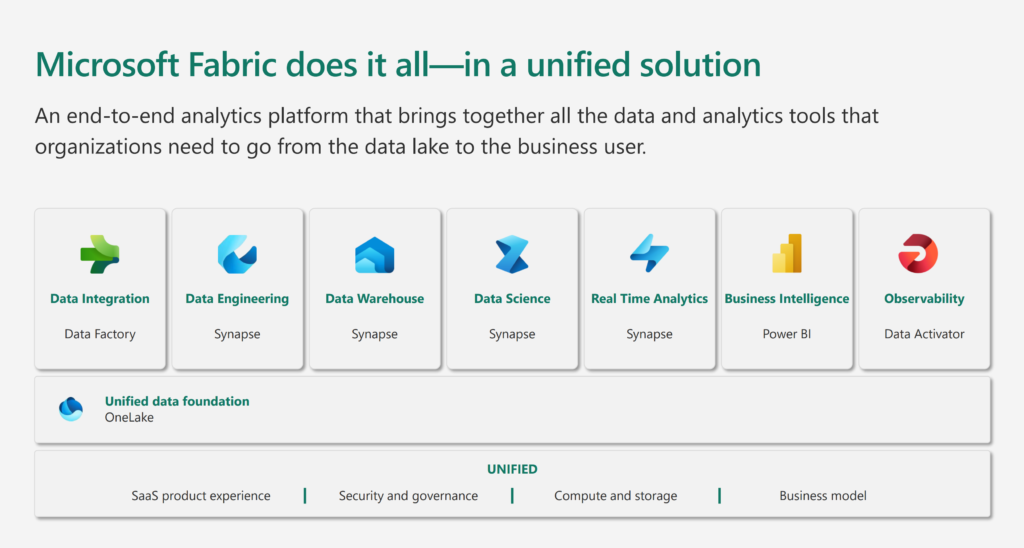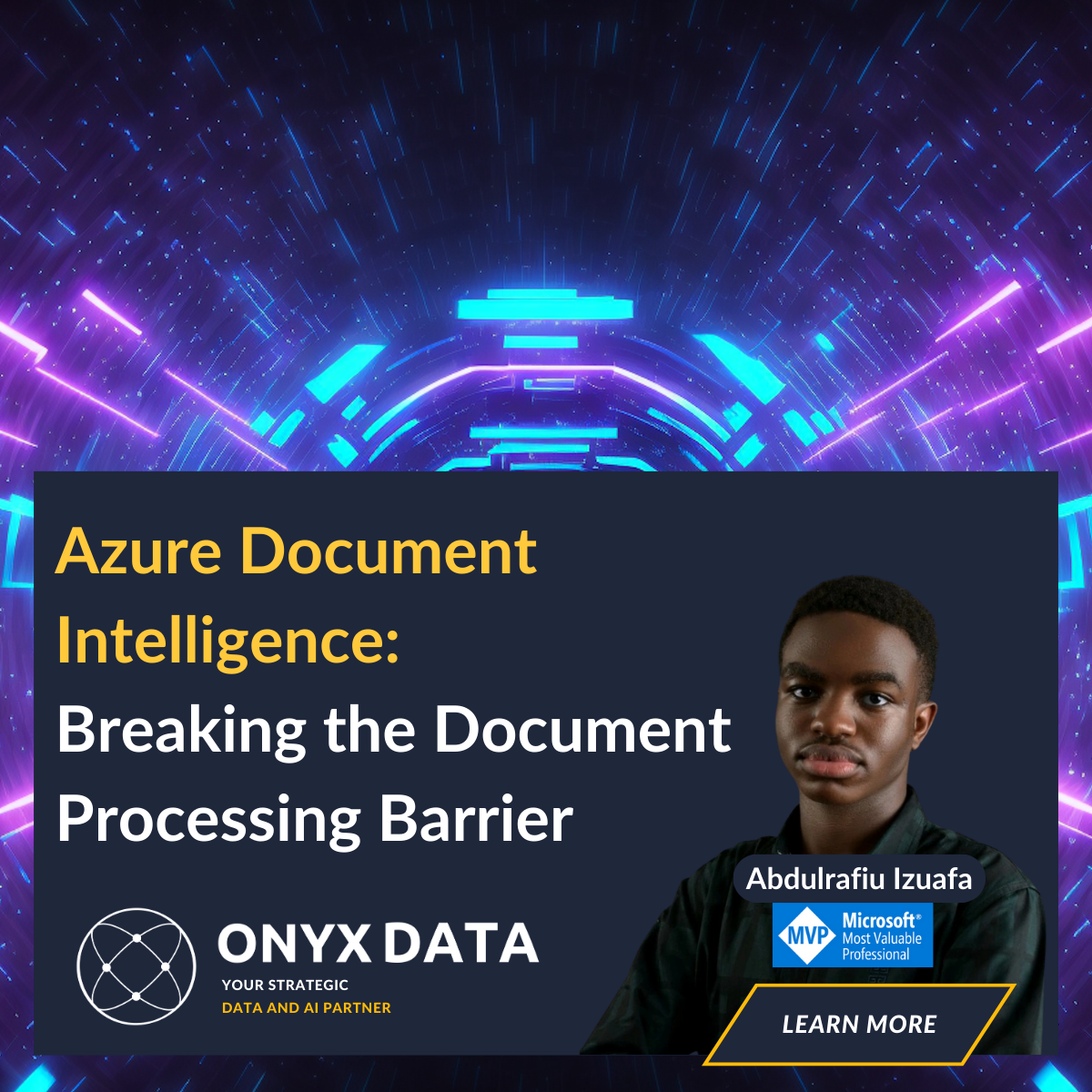Microsoft Fabric vs Databricks – A Comprehensive Comparison
Selecting the right platform can revolutionise your organisation. As IT leaders weigh their options, the debate between Microsoft Fabric and Databricks is crucial. This article offers a clear comparison to help your decision.
Microsoft Fabric integrates smoothly with Microsoft products, providing tools to streamline complex data processes. Meanwhile, Databricks excels in collaborative data science and AI, using Apache Spark for quick data processing and insightful analysis. Understanding their differences in architecture and pricing is vital for managing your data efficiently.
You’ll find an in-depth look at their features, architecture, pricing, and how AI supports data-driven decisions. After reading, you’ll have a better idea of which platform suits your organisation, helping you create a data strategy that meets your specific business needs.
Microsoft Fabric vs. Databricks
Microsoft Fabric and Databricks lead the way in analytics platforms, each offering unique strengths for data management. Here’s a quick look at both.
Microsoft Fabric is a comprehensive solution, integrating seamlessly with Microsoft products. Its user-friendly interface and robust security make it ideal for businesses within the Microsoft ecosystem. It’s effective at organising and analysing data across various sectors.
Databricks excels in big data and AI applications with its base in Apache Spark. It balances speed and scalability in the cloud, enabling collaborative work for data scientists and analysts.
Both platforms aim at enhancing data-driven business intelligence. Exploring their features can aid businesses in choosing the right fit for their data strategy.
Feature and Architecture Comparison
This section examines the key differences in the architecture and features of Microsoft Fabric and Databricks. These differences affect their suitability for various business uses, despite both offering strong data engineering capabilities.
-
Core Components: OneLake vs. Lakehouse Model
Microsoft Fabric features OneLake, optimising data storage and retrieval while integrating governance and analytics. Conversely, Databricks’ Lakehouse combines the speed of data warehouses with the flexibility of data lakes, simplifying data management. -
Cloud Integration Benefits
Microsoft Fabric integrates well within Azure, benefiting those deeply embedded in Microsoft’s cloud. Databricks, cloud-agnostic, supports AWS, Google Cloud, and Azure, offering flexibility for multi-cloud strategies. -
Data Processing Power
Databricks excels in fast data processing with Apache Spark, ideal for large data tasks. Microsoft Fabric, emphasising governance and easy use, enhances collaboration for non-technical users. -
AI and Machine Learning Support
Both platforms support AI initiatives. Microsoft Fabric offers Azure-based tools, while Databricks supports various machine learning frameworks for robust AI project deployment.
This comparison clarifies how Microsoft Fabric and Databricks suit different needs, influenced by existing infrastructure and strategic goals. Next, we’ll explore their pricing models to weigh benefits and investments.
Pricing Models: A Quick Overview
Choosing a data platform heavily depends on the pricing model, affecting your overall costs. This overview compares how Microsoft Fabric and Databricks price their services, aiming for cost efficiency.
Microsoft Fabric uses a capacity-based model, offering predictable costs aligned with usage. This approach helps with budgeting by letting businesses pay a fixed fee for set capacity, ideally suited for steady workloads.
In contrast, Databricks adopts a consumption-based model, which is flexible and suits variable workloads. It charges based on actual usage, allowing you to pay only for resources consumed, often leading to savings.
Both models have extra costs like storage, data transfers, and feature upgrades. Businesses might try both models to see which fits their needs best. Deciding involves understanding how pricing impacts costs and productivity, aligning with growth goals.
Beyond pricing, examining AI and Machine Learning features on each platform can highlight further differences, influencing your choice based on potential use cases.
AI and Machine Learning Capabilities
Microsoft Fabric and Databricks excel in AI and ML by integrating with tools effortlessly, offering a cohesive space for growth. Let’s explore their standout features:
-
Microsoft Fabric ML: Seamlessly connecting with Azure Machine Learning, Microsoft Fabric enhances efficiency by leveraging Azure’s resources for model training and deployment. Its rich algorithms and data tools enable swift prototyping, making it ideal for streamlined AI tasks. Extensive documentation and support help boost productivity and minimise issues.
-
Databricks ML: Databricks shines with its deep learning and model management prowess, able to handle large data sets. Users benefit from integration with TensorFlow and PyTorch, a feature-rich library, and collaborative workspaces. Its focus on runtime optimisation promises faster model execution and testing.
Both platforms aim to democratise AI and ML, catering to diverse user needs. Microsoft Fabric works well with Azure, while Databricks supports flexible frameworks. As data-driven decisions dominate, understanding these platforms’ strengths is key.
Next, we’ll delve into how both Microsoft Fabric and Databricks support seamless data integration and ingestion, essential for a solid data strategy.
Data Integration & Ingestion Synergies
Efficient data integration and ingestion are vital for thriving in today’s data-rich environment. Microsoft Fabric provides a robust framework with prebuilt connectors that simplify data interactions, reducing manual handling and enabling swift decision-making.
Microsoft Fabric’s appeal lies in its ability to unify diverse data sources, creating a single, cohesive view. This is crucial for organisations with varied storage solutions across cloud and on-premise systems, improving data management and operational efficiency.
Onyx Data enhances Microsoft Fabric’s capabilities, offering businesses tailored solutions for streamlined integration. They transform data into actionable insights, aiding strategic decisions and operational agility.
While Databricks offers dynamic data management, its Python and SQL focus may challenge those with diverse coding backgrounds. Microsoft Fabric offers a more accessible alternative for powerful data operations.
With Microsoft Fabric’s integration capabilities and Onyx Data’s expertise, enterprises can optimise data architecture, drive analytics, and foster business growth.
Conclusion
Microsoft’s introduction of Microsoft Fabric is a crucial development in the fast-changing digital world. Our discussion highlighted Microsoft Fabric as a capable competitor to Databricks, each catering to different needs. Neither serves as a universal solution.
Microsoft Fabric integrates well with Microsoft’s tools, making it appealing for companies already using Microsoft’s products. Its flexible pricing caters to various budgets, enhancing its accessibility.
In contrast, Databricks excels in AI and machine learning, setting a high standard for data-heavy tasks requiring advanced analytics.
Choosing between Microsoft Fabric and Databricks depends on your company’s goals. How do these platforms align with your organisation’s objectives? Consider your current tech setup, future goals, and the available skills to make the best choice.
About Onyx Data
Onyx Data is a leading provider of consulting services and training, dedicated to harnessing advanced data analytics and AI integration with a focus on Microsoft technologies, such as Power BI and Microsoft Fabric. Aimed at businesses across various industries, we specialise in transforming raw data into actionable insights that elevate decision-making capabilities and operational efficiency.
The importance of Onyx Data lies in its unparalleled ability to help enterprises achieve measurable success by bridging the gap between data potential and business outcomes, offering solutions that scale and evolve with technological advances.
Unlock the potential of your data with Onyx Data. Visit OnyxData.co.uk today!







